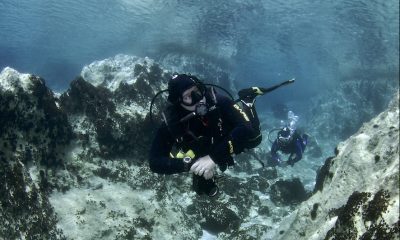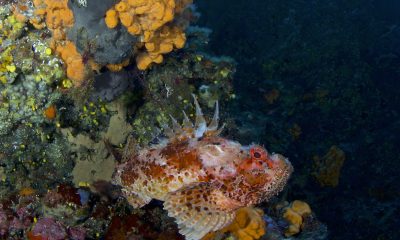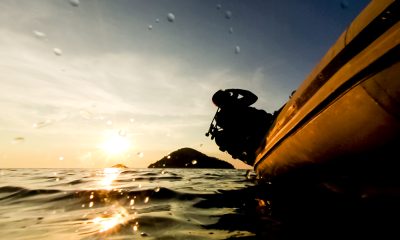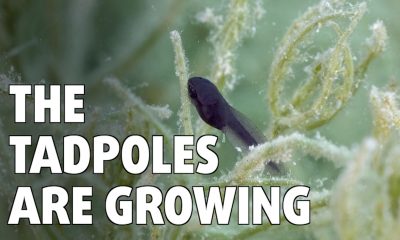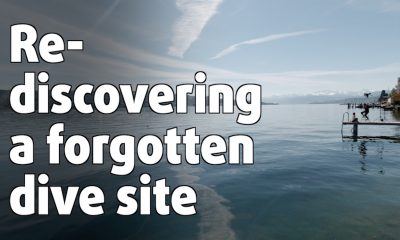Blogs
Dive Notes from a Small Island: Part 5 – Scapa Flow, Orkney Islands
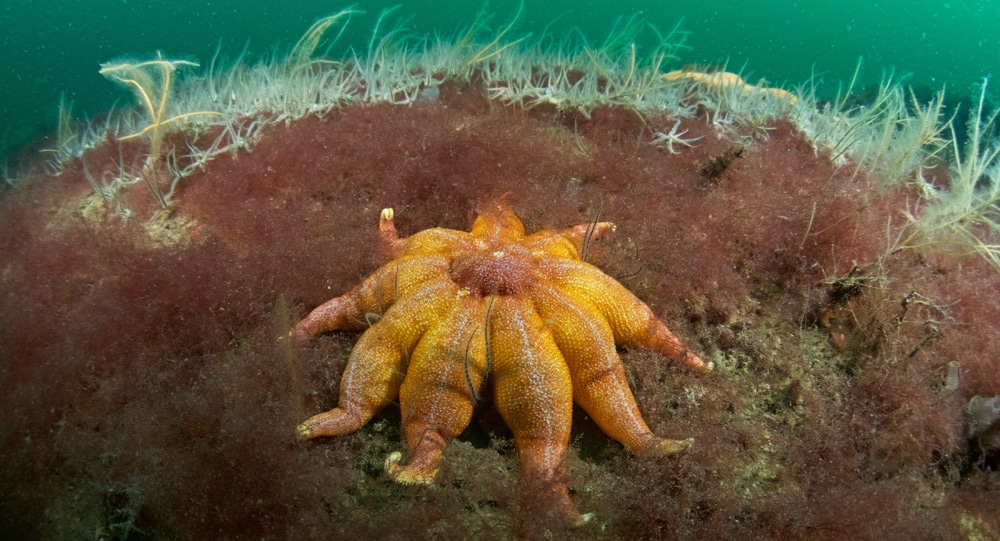
When first planning our summer adventure, our friend Rob mentioned he would be working in Scapa Flow over the summer and he would help us organise some diving if we wanted to come and visit. Since Scapa Flow is well known in the diving community for excellent wreck diving and having a fun and knowledgeable friend in the area we needed little convincing to include Scapa on our itinerary!
We left Seahouses on a beautiful, flat calm sunny day and enjoyed 2 days driving north through the stunning Scottish Highlands to Scrabster. Here we caught the ferry across to Stromness, which was to be our home for the next 5 days. We spent the first day sightseeing, visiting the Ring of Brodgar standing stones, Yesnaby cliffs and Churchill Barriers. After this we had booked 4 days diving on the Sharon Rose to explore the wrecks of Scapa Flow, before our return ferry to the mainland.

On the morning of the first dive day we met the boat captain Alan on the dock and were shown around the Sharon Rose, an old fishing vessel now kitted out for divers. The boat is well equipped with a compressor on board and nitrox capabilities, a drying room for drysuits and hoods and gloves and a pleasant kitchen/dining area for dive briefings and spending surface intervals out of the wind.
The plan for the day was to dive the SMS Dresden II, one of the WWI German Light Cruisers, then spend our surface interval at Scapa Flow Visitors Center in Lyness, Hoy. Here we could read about the history of the area and get information on the wrecks we would be diving over the next few days, before diving a WWII wreck in the afternoon.
Dive 14: SMS Dresden II
Site description:
The S.M.S Dresden II is a light cruiser from the German High Seas Fleet, 115m long and a beam of 12m. She was scuttled with the fleet in Scapa Flow on 21 June 1919. She now rests on her port side in a maximum of 38m water at the stern and is largely intact. The northward pointing bow lies in 30m, the shallowest point is around 16m. The shot line is tied off around 22m towards the bow where the forward deck has peeled away from the hull. The Dresden is usually dived as either a bow or stern dive. The bow is a good shallower dive to start on and the stern can be done as a deeper dive for those familiar with diving in Scapa.
The Dive:
I had butterflies, as is usual for my first dive in a new place, some nerves and also excitement made me miss key points of the briefing and I descended with a good idea of our position on the wreck and the route we would take, but only a vague idea of the key features we were looking for. The water was a little dark and the vis about 5m, so I was concentrating hard on the navigation and trying to remember what the various lumps and bumps on the wreck once were, with little success. We enjoyed a fairly easy first dive, my favourite bit was a new species (for me) of nudibranch which was busily laying eggs on the starboard hull. However, I did come up from the dive feeling very grateful that we were soon to go to the museum and learn more about the wrecks, so I might better appreciate the finer details of the ships on my later dives!
Mike’s Thoughts:
This was a good introduction to diving in Scapa Flow but I must admit I didn’t have all of the right equipment to enjoy it as much as I could. I was excited to use my fisheye lens for the first time on this trip but found I didn’t really have the right lighting system to appreciate the all of the features of the wreck. My strobe spotting lights just didn’t penetrate the murky water very well. Nonetheless, I was able to really appreciate the scale of the ship while floating along the deck towards the stern, and enjoyed inspecting the armored control tower that was once underneath the bridge. My appetite for seeing more of the wrecks in Scapa was whetted (after a lunch break of course!)

Surface Interval:
The Scapa Flow visitors center in Lyness is a fantastic museum that presents the considerable history of the area. It tells the story of the Royal Navy’s anchorage and sea battles in the first world war, the internment of the German High Seas Fleet during the armistice and the subsequent scuttling ordered by Rear Admiral Ludwig von Reuter in Scapa Flow, Orkney on 21st June 1919. It also covers the actions of WWII, including personal accounts and recovered artifacts. The center also does fantastic cake, which is not to be missed! Feeling much more informed, we headed back to the Sharon Rose for our second dive.
Dive 15: F2 & YC21
Site description:
The F2 was a WWII German escort boat, converted into a torpedo recovery boat, that was captured in an early skirmish at the start of the war and taken to Scapa Flow and moored in Gutter Sound. She sank at her moorings in 1946. The YC21 was a salvage barge, which sank during the salvage operations on the F2 in 1968, she has the anti-aircraft guns from the F2 in her hold. Both wrecks rest in relatively shallow water and both the F2 and the YC21 can be easily explored in one dive. One possible route is to go down the barge shot line, see the anti aircraft guns in the hold and drop down for a swim-through. Follow the rope that links the two wrecks and go over the broken up section, looking for the gear mechanism at the side. The ship becomes intact again and you can see the small gun before returning up the shot line at the bow of the F2 at about 18m.
The Dive:
This was an excellent, easy dive. With a bit better visibility and light for us there was lots to see, even though these ships are much smaller than most of the other wrecks. I enjoyed getting a good view of the F2’s bow section and seeing the guns on the YC21 and both wrecks are covered in life with some friendly dogfish. We also got to see Risso’s dolphins on the way back to Stromness!
Mike’s Thoughts:
With a bit more sunlight overhead and a shallower depth the visibility was much improved for us. Both of these wrecks are tiny by local standards but still very much worthwhile as a second dive for the day. The sea life here was impressive with lots of busy crustaceans and several dogfish swimming around the wrecks. I enjoyed snapping pictures of various large bits of metal and machinery scattered around the wrecks, trying to puzzle out what functions they would have served while the vessels were intact. This was a great dive.

Dive 16: SMS König
Site description:
The König is one of three 25,388 ton German High Seas Fleet battleships, turned turtle by the massive weight of their superstructure, as they sank during the 1919 scuttling. The König is the most broken up of the 3, as this was the first to be salvaged and so it was blasted multiple times in search of valuable metal parts. However this has opened up the wreck so that divers may view some key parts of the ship that would otherwise be hidden, due to its upside-down profile. This is a deeper recreational dive at 38m, but due to the blast holes in the hull, features can be appreciated from the top of the wreck at around 20-25m.
The Dive:
This dive felt deep, dark and very green. However despite the lack of vis, you could still get an idea of how colossal this wreck must be; the steel walls of the armoured citadel are 12inches thick and the rudder is huge!
Mike’s Thoughts:
Once again I found that my camera’s lights were just not strong enough to penetrate the murky water, so I couldn’t really get a great sense of the enormous scale of this wreck. One feature of the wreck that we did manage to find was the 12-inch thick citadel armor plating, part of the massive metal box protecting the vital components of the ship. It was amazing to see it up close and imagine just how much raw material was used in the construction of this ship. The König definitely rewards repeated dives and my first dive here only gave me a glimpse of its potential. It’s on my list for more dives in the future!

Dive 17: SMS Karlsruhe II
Site description:
The Karlsruhe is a German High Seas Fleet light cruiser lying on her starboard side. Though quite deteriorated in quite a few places, there is still much to explore and the shallower depth gives plenty of time to see the whole ship. There are 2 shot lines, one at the front, on the sea bed by the conning tower at 27m and another on top of the stern at 21m. The stern is intact and nice and round and has an anchor sticking out of the sea bed but the ship loses structure (from salvage work) in the center and from general deterioration by the bow. There are many holes to explore on the way to the mast, gun breeches and the conning tower. Of the two forward deck 5.9 inch guns, the shallower has the label ‘Offnen’ still visible on it and the anchor capstans are accessible and visible.
The Dive:
The route recommended to us by our friend Rob was to descend on the stern, keep the wreck right, until the ship loses structure, cross the wreck to put the deck on your left shoulder and go forward exploring the conning tower, guns and anchor capstans before ascending up the other shot line.
This was my favourite dive so far, the ship has lots of nice stuff to see including the 5.9 inch guns and is also small enough to see in one dive, while still being very impressive. It is covered in life with thousands of brittle stars and many plumose anemones.
Mike’s Thoughts:
This was another really nice dive site. Although the wreck was broken up more than others there were still a lot of different features to see. Starting right off with the nicely rounded stern and still-intact teak decking, we slowly made our way forward to the bow area. I especially enjoyed the guns on this wreck with the breeches and barrels of several 5.9-inchers easily accessible. The sea life was great as well, with large schools of fish and almost every square inch of wreck covered with anemones and brittle stars.
Dive 18: SMS Cöln II
Site description:
The Cöln is a light cruiser and the sister ship of the Dresden. Lying on her starboard side in 36m of water, the top of the wreck is at about 20m and with most features intact it is very easy to navigate. The mooring line is often on one of the life boat davits by the bridge area, which is still very intact and the fore mast stretches out to the crows nest. The mid section is damaged and there is a swim-through that goes from the starboard bow to midships one deck in, taking advantage of this. Divers not wishing to enter can explore the outside of the wreck, which has plenty to enjoy.
The Dive:
This is a really impressive warship, looking head on to the bow of the Coln is brilliant, the conning tower and anchor chains still running from the hawse look fantastic. You can also clearly see the teak boards on the deck as you swim along. We spent the dive exploring the outside of the wreck and wished I had more no-deco time to spend down there!

Mike’s Thoughts:
This was my favorite dive so far. Floating along the now-upright decking was hypnotizing and gave one a sense of the true scale of the wrecks here. The neatly draped anchor chains and capstans towards the bow were a treat, and the sharply-pointed bow itself was great to explore as it rose high off of the bottom. I began to realize that I generally liked diving on the cruisers the best; with slightly shallower depths and sideways angles of repose they seemed to offer more features of interest during casual recreational dives. SMS Karlsruhe was another highly satisfying dive.
Dive 19: SMS Brummer
Site description:
The Brummer was a German High Seas Fleet light cruiser built for speed in mine laying activities. She was scuttled with the fleet in 1919, coming to rest on her starboard side, in a northwesterly direction in 36m, the shallowest point is 22m. This wreck has deteriorated rapidly in the last few years, possibly due to its lighter construction, so structures are not always where they should be.
The Dive:
The visibility wasn’t brilliant, however the sharply curving bow was very impressive coming out of the dark and you could imagine she must have been a very fast ship. Despite much of the superstructure having fallen down there is still lots to see and the rails for moving the mines were very visible. We were joined by a seal part way through the dive, in amongst the schools of bib.
Mike’s Thoughts:
The mood was spooky as we descended into this dark and deep dive. Maybe it was the wreck, or maybe just the cloudy weather. In any case we were lucky enough to see a large grey seal hunting among the schools of fish in the wreck. The almost razor-sharp bow was impressive, and a testament to how fast and technologically advanced this ship had been in her time. I had just enough no-deco time left before ascending to enjoy watching a highly animated edible crab moving along the edge of the wreck.

Dive 20: SMS Cöln II
The Dive:
Our original plan to dive the battleship Kronprinz Wilhelm fell through when the mooring line was removed, so we requested to go back to the Cöln to explore the swim-through. I had enjoyed our first dive on this wreck, but seeing it a second time was definitely worth while, I appreciated it even more and the swim-through was brilliant! (Big thanks to our fellow diver Kim, who showed us the route). For me this dive was the best of the Scapa trip.
Mike’s Thoughts:
This wreck was even better the second time around. I really enjoyed the swim-through at the bow end of the wreck with the glow of daylight streaming down through portholes and gaps in the hull. The underside of the armored control tower was magnificent to see as well. Many guidebooks have mentioned this, but the wrecks of Scapa do get more interesting and rewarding with multiple visits. Instead of worrying about how to return to the shot line or what purpose a particular piece of twisted metal once served, I found it was quite relaxing to have a specific plan for the dive, understand what I was seeing and really enjoyed the bottom time available.

Dive 21: SMS Dresden II
The Dive:
Having enjoyed revisiting the Cöln, we requested to dive the Dresden again as well. The Dresden was also much more interesting to me the second time round; by now I had got my eye in identifying different parts of the wreck and was much more relaxed on the dive in general. We got to see the shape of the shield on the bow and did a lovely little swim-through from the underside of the bow and out from the peeled away deck. I’m really glad we got to dive this again so I could really appreciate it properly.
Mike’s Thoughts:
Again, this dive site was much more interesting the second time around. Not only was it easier to navigate but we were able to really focus on more features of the wreck. The ship’s shield on the bow was quite interesting, as was the old bathtub from the officers’ quarters tucked into an open compartment near the bow. A short swim-through just under the bow was impressive too as I was able to see more of how the vessel was constructed from the inside. This was a fitting last dive for our short stay at Scapa!
Having admittedly not done much research beforehand, I found that the diving at Scapa Flow far exceeded my expectations. I was predisposed to think that the dives would be deep, dark, and quite challenging but this wasn’t really the case. All of our dives were well within recreational limits and our single tank setups worked well for us. The Orkney Islands are quite amazing outside of the water as well, so the combination of a huge number of great dives within the small confines of the Flow with interesting things to do when not diving made this a wonderful trip. I’ll be back for sure!

Blogs
Why Skopelos should be your next summer dive destination!
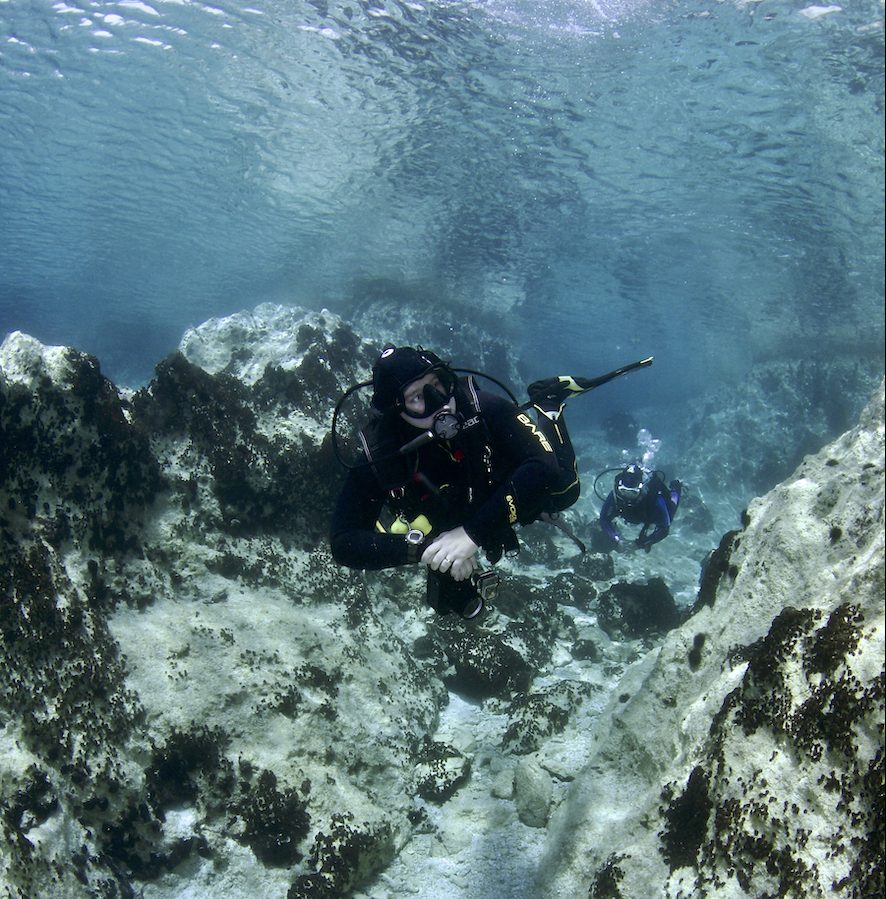
Earlier this year we were given a fantastic opportunity to visit Skopelos in the Sporades Islands in the northern Aegean Sea. This green, mountainous island sits at the edge of the largest marine park in Europe, the National Marine Park of Alonissos and Northern Sporades. We were to focus primarily on scuba diving, but during our short stay we were especially impressed with the equally diverting topside options in Skopelos.
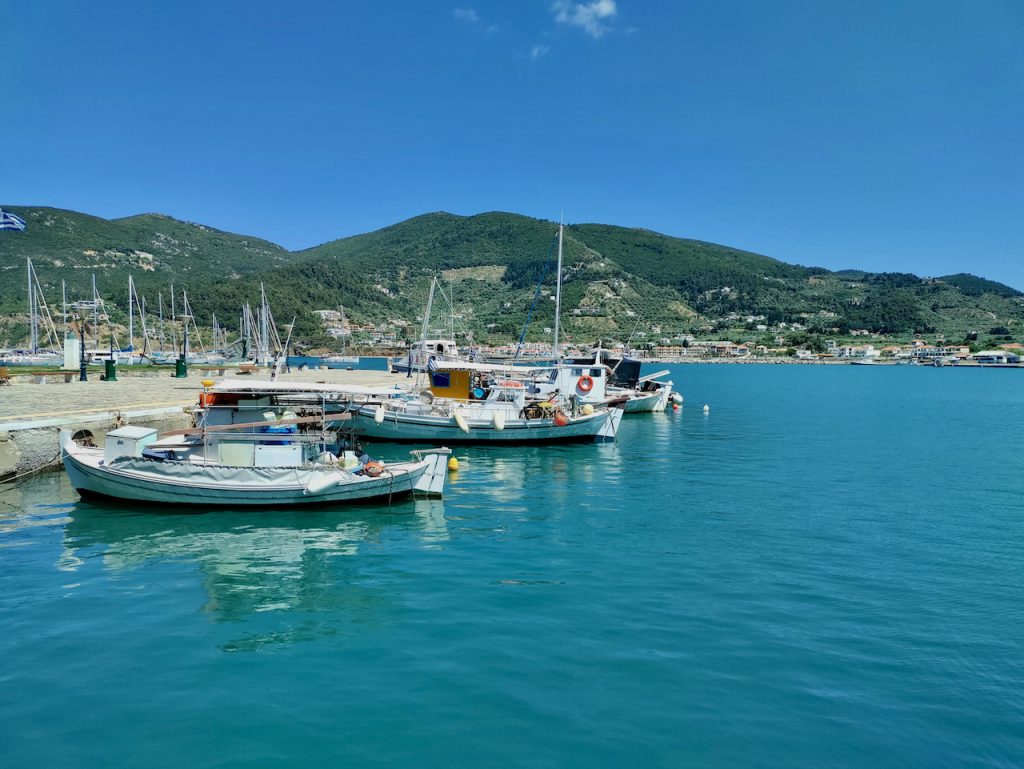
Our short stay meant we just got a glimpse of the great diving on offer, however our hosts at Skopelos Dive Center in Panormos treated us to some brilliant sites just a few minutes from shore. From nudibranchs, shoals of damselfish, large groupers and shy octopus to caverns and swimthroughs featuring rainbows of light. The variety of marine life and topography we encountered was outstanding.
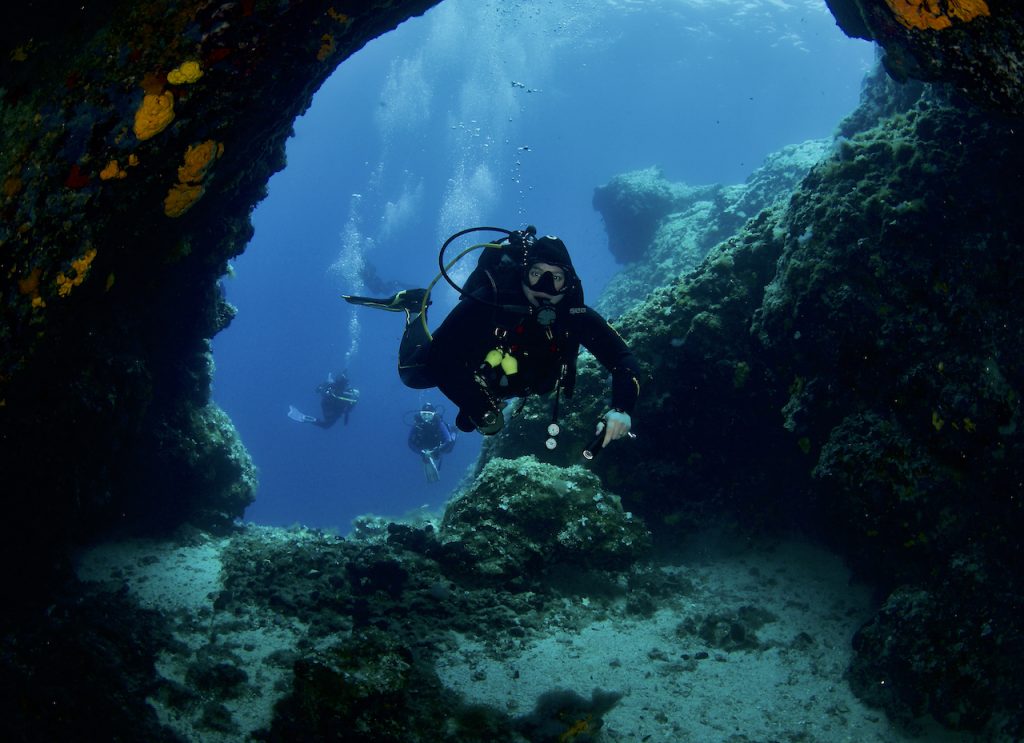
One of the most incredible experiences was the chance to dive the wreck of the Christophoros, an 83m long cargo ship sitting upright on the seabed, with the deck at 32-35m. The large, well preserved and stunning wreck is a joy to dive. It is also located just a 2 minute boat ride from shore in a sheltered and current free location with great visibility, creating the conditions for a great dive. We had a few days of truly wonderful diving and we could certainly spend much longer in this fabulous holiday destination!
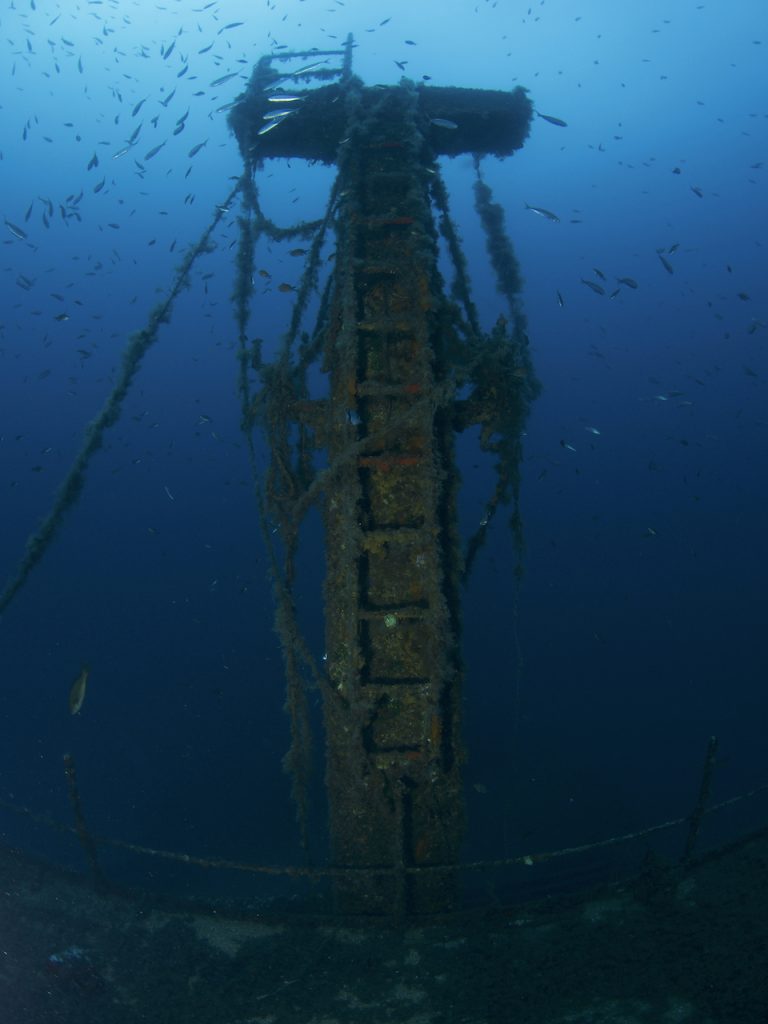
What makes Skopelos special?
This island is one of the less visited Greek islands with a very relaxed and friendly feel, even though it is really easy to get there – many airports in the UK offer flight connections directly to Skiathos (the hub of the Sporades) May through October. The diving is excellent and there are many dive sites to enjoy. Lastly, the variety of non-diving activities makes for a full vacation experience. Boat trips into the National Marine Park take you to visit secluded beaches and give you a chance to see some amazing wildlife, the Mamma Mia! tours are excellent fun, and numerous small, beautiful seaside villages with great tavernas and beaches are a delight to visit.
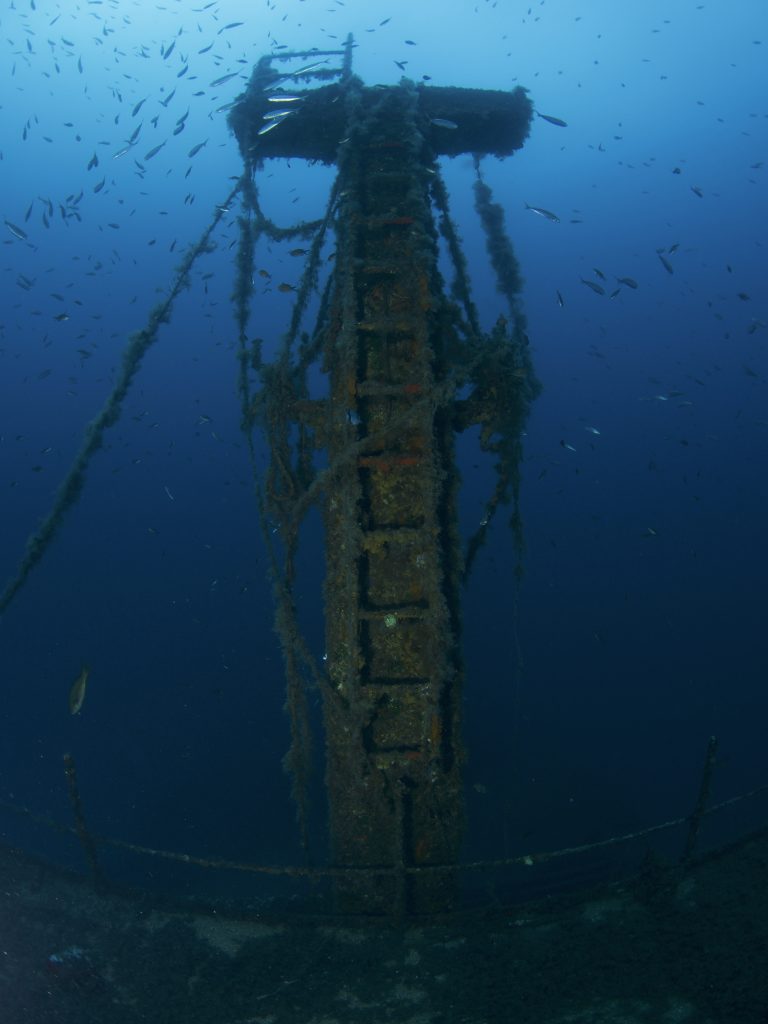
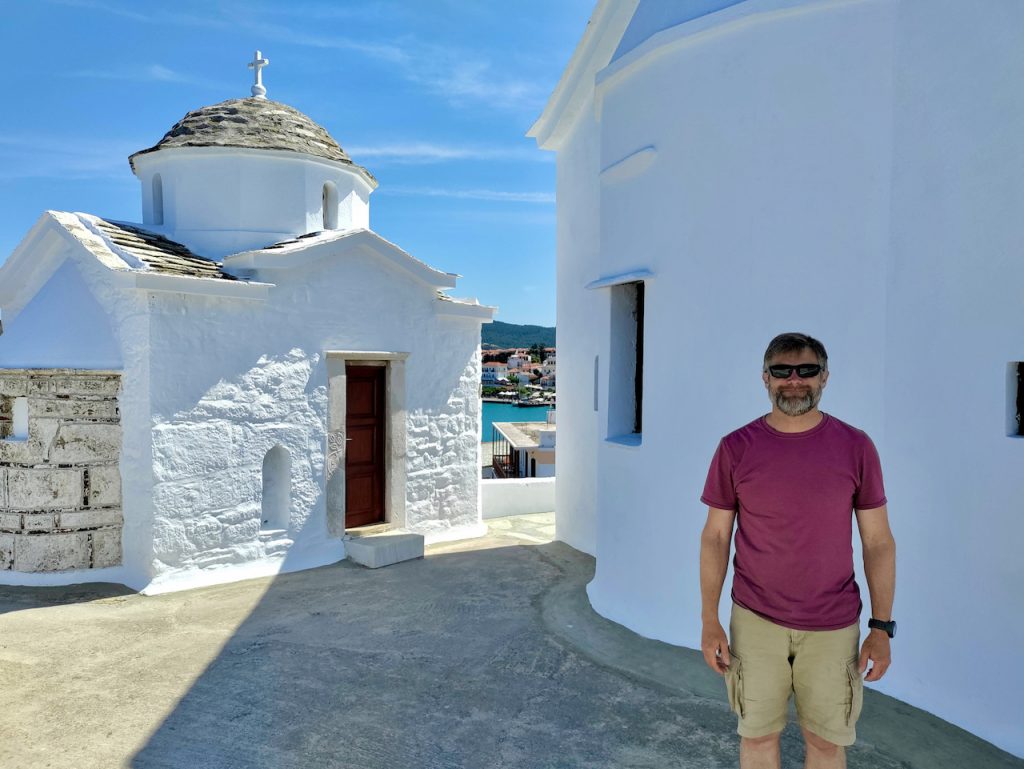
As a destination, Skopelos really has everything you could ask for both for a diving holiday and a fun summer vacation. Look for our full print article in an upcoming issue of Scubaverse’s own Dive Travel Adventures magazine!
Thanks to:
Municipality of Skopelos (https://skopelos.com/)
Skopelos Dive Center (https://sporadesdiving.gr/)
Ionia Hotel (https://www.ioniahotel.gr/en)
Dolphin of Skopelos (https://dolphinofskopelos.com/)
Ta Kymata restaurant (@takymata)
The Muses restaurant (https://www.facebook.com/TheMussesMousses/)
Aktaiov resturant (https://skopelos.com/listings/aktaion-taverna/)
Blogs
Amazing Alonissos – The all round dive vacation destination
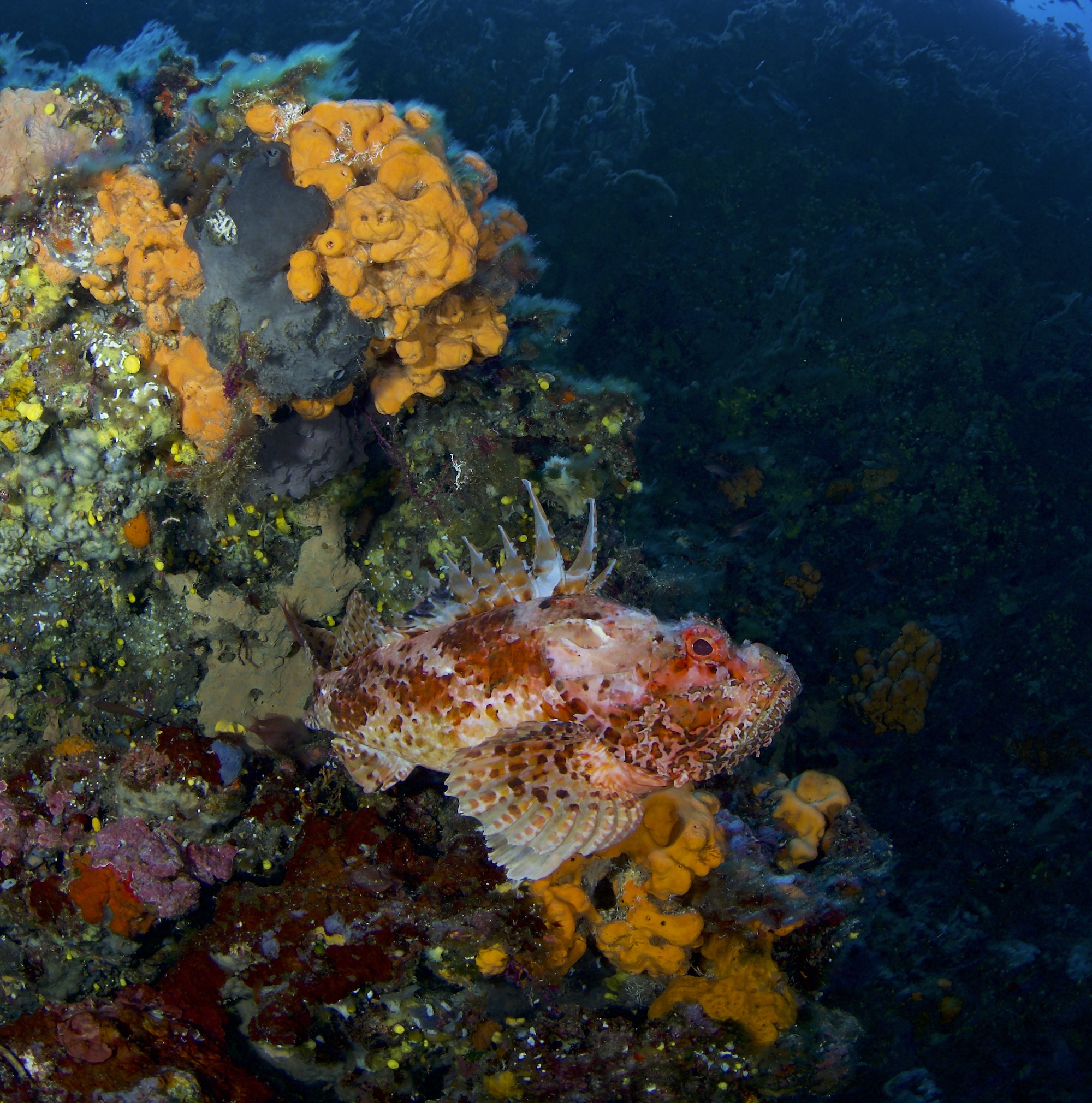
In early summer we were given a wonderful opportunity to visit Alonissos in the Sporades Islands in the northern Aegean Sea. This green and forested island sits at the edge of the Alonissos National Marine Park, the largest marine protected area in Europe. Our main focus was to be scuba diving, but during our short stay we were especially impressed with all of the other activities and experiences available on Alonissos for the discerning vacationer.

The scuba diving was really outstanding. In contrast to some areas of the Mediterranean, the marine biodiversity here was impressively diverse and abundant. Our short stay meant we just had a small taste of the diving available, however our hosts at Alonissos Triton Dive Center treated us to some exceptional sites from their impressively long list. The variety of marine life we encountered was a delight: large Gorgonian sea fans, many species of nudibranchs, small pipefish to large groupers, octopus, and much more.
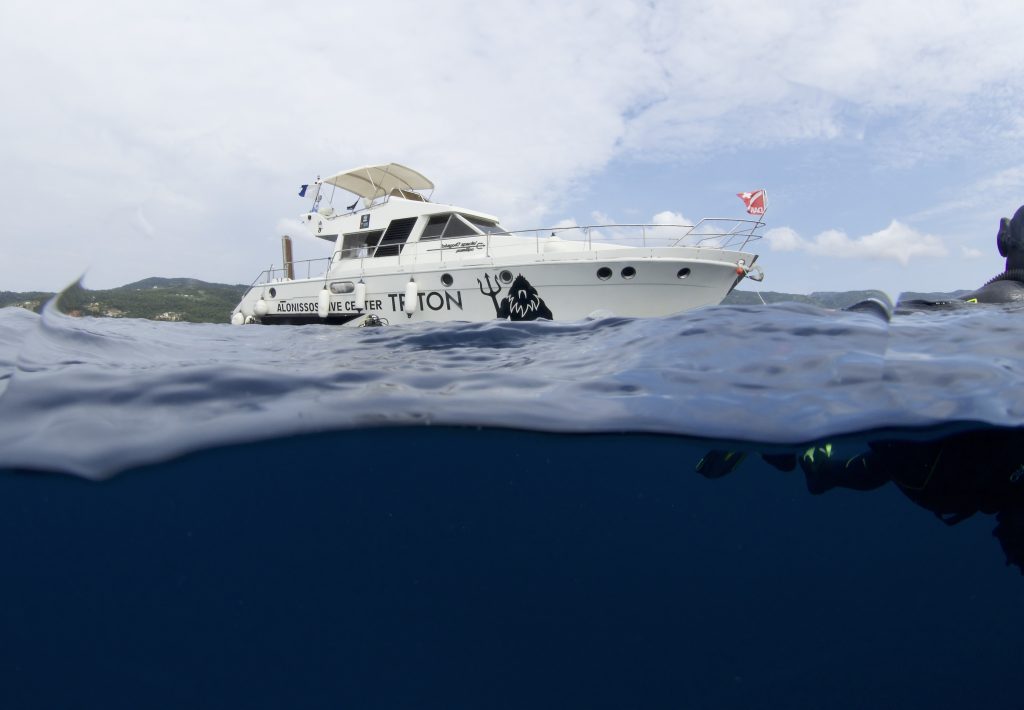
One of the most incredible experiences was the chance to dive the oldest accessible shipwreck in the world, the Ancient Shipwreck of Peristera underwater archeological site from 500 BC … an amazing dive site with a very unique automated underwater museum monitoring system in place to protect its archaeological heritage. It was a busy but hugely satisfying few days of diving and we could certainly spend much longer on this idyllic isle!
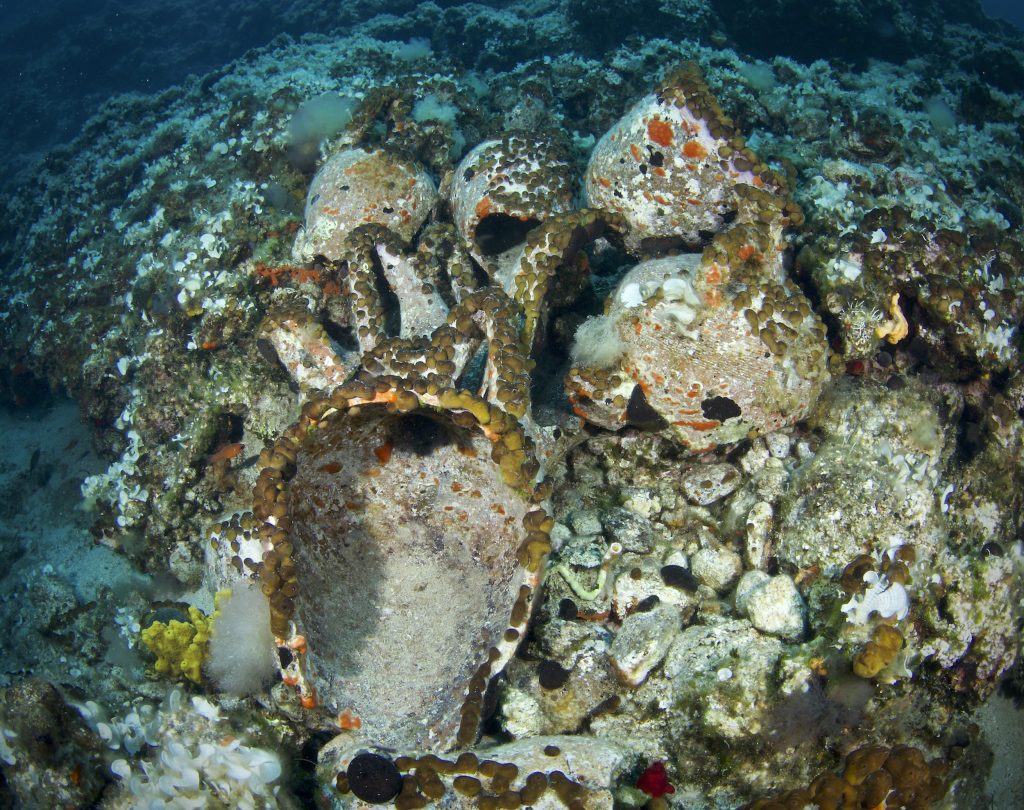
Greece has a huge number of beautiful islands to visit, so why choose Alonissos?
This island is one of the quieter Greek islands and as such has a very relaxed and welcoming feel, where you can find an authentic slice of the Aegean region. And, it is really easy to get there — so many airports in the UK offer flight connections directly to Skiathos (the hub of the Sporades) that you should not have to drive more than 100km in the UK to an airport.
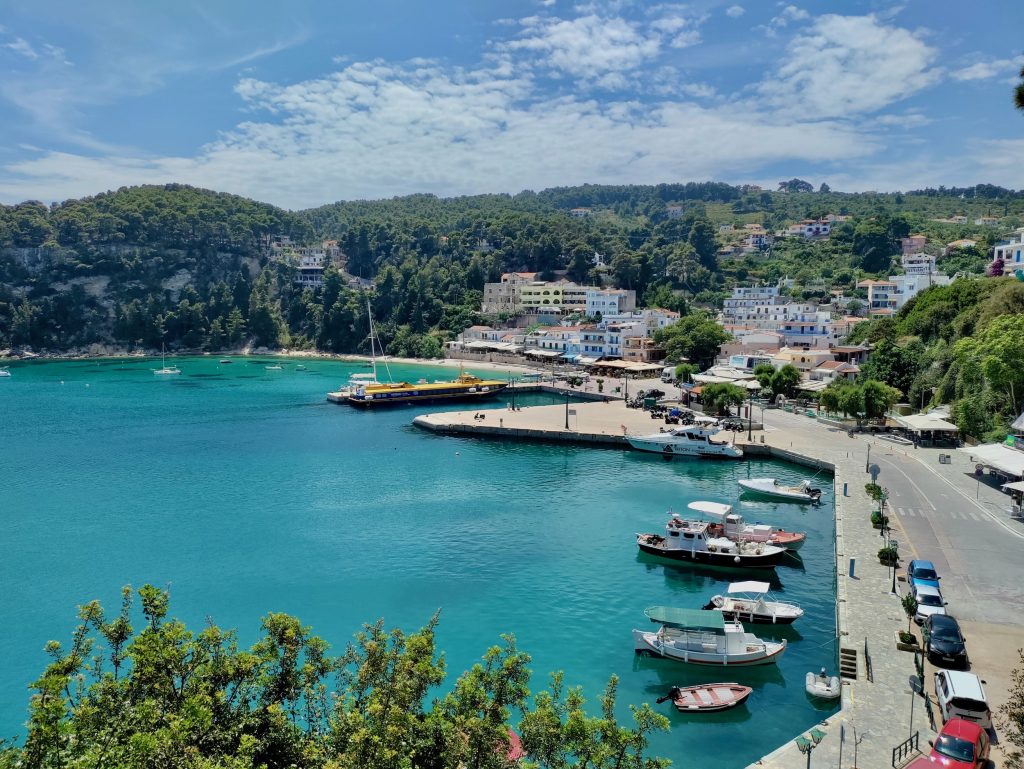
Finally, the variety of non-diving activities is hard to beat. There are boating day trips into the National Marine Park, taking you to visit secluded beaches and giving you a chance to see some amazing wildlife (such as monk seals, Eleonora’s Falcon, and several species of dolphin to name a few). Both the main port town of Patitiri and the old village of Chora are full of interesting shops, charming alleyways, and restaurants with delicious meals. As an added bonus, the Alonissos cheese pie is a particularly moreish local specialty!
As a holiday destination, Alonissos really had everything one could ask for. Look for our full print article in an upcoming issue of Scubaverse’s own Dive Travel Adventures magazine!
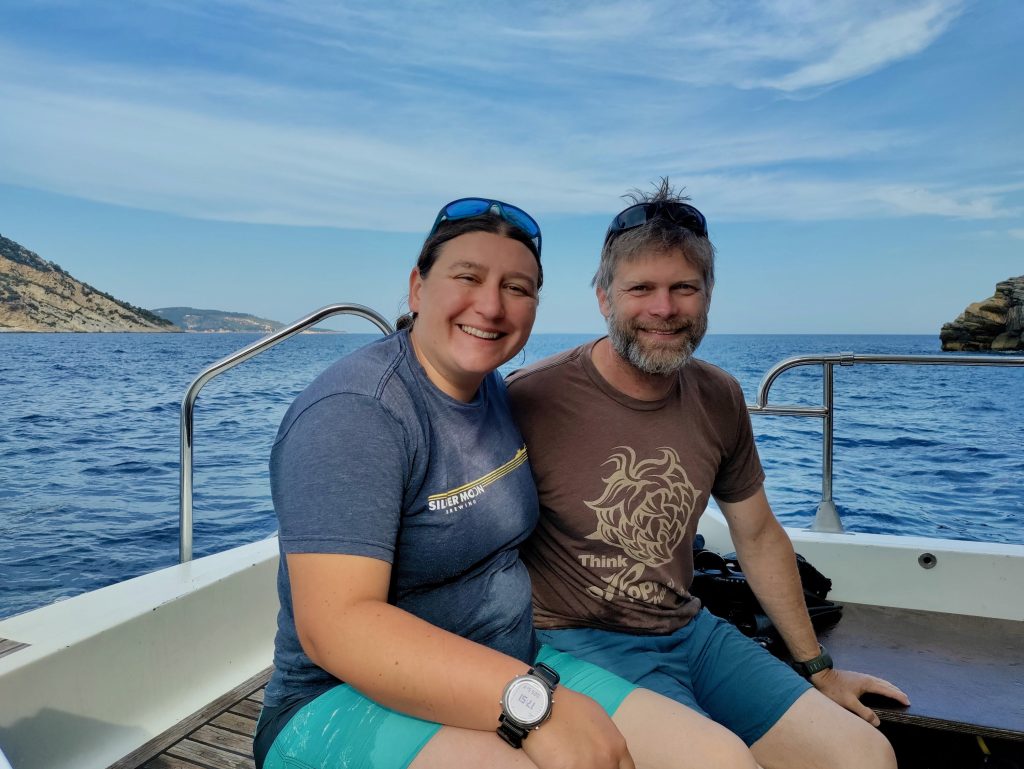
Thanks to:
The Municipality of Alonissos (https://alonissos.gr/en/)
Alonissos Triton Dive Center (https://bestdivingingreece.com)
Alonissos National Marine Park (https://alonissos.gr/en/marine-park/overview.html)
Paradise Hotel (https://paradise-hotel.gr/)
Albedo Travel (https://alonissosholidays.com/)



